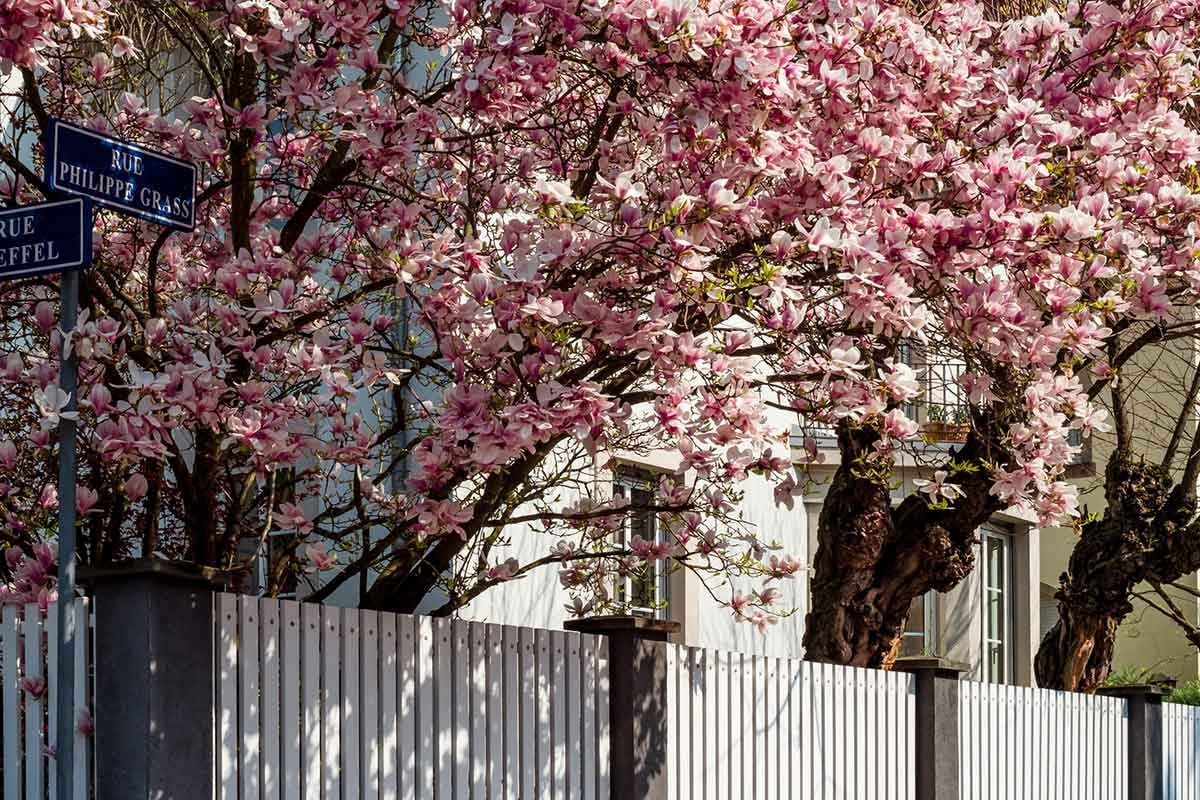Magnolia trees feature spectacular spring flowers, beautiful leaves and are easy to care for. See if one of the 200 varieties are right for your yard.

How to Plant and Grow a Magnolia Tree

Magnolia trees are ancient, with fossilized specimens as old as 20 million years. They’re so ancient in fact that they predate bees and other winged pollinators and relied on pollination from beetles.
In more recent times, magnolia trees have been valued for their large, fragrant, gorgeous flowers, but also for their culinary and medicinal uses in some cultures. They’re low maintenance, resistant to most pests and diseases and offer year-round beauty. Here’s how to bring these gorgeous flowers to your landscape.
On This Page
What Is a Magnolia Tree?
Magnolia trees are a genus of over 200 flowering trees that are prized for their large, fragrant and stunning bowl- or star-shaped flowers that bloom sporadically, but prolifically, from mid-March to April. Depending on the specific type of magnolia tree, the flowers can be white, green, yellow, purple or pink, and may not bloom until the tree is at least 15 years old.
Their large, glossy, green leaves also offer aesthetic value, with some types of magnolia trees shedding every fall (deciduous Magnolia trees), while others keep their leaves all year (evergreen Magnolia trees). Both types can grow anywhere between 10 to 100 feet tall, depending on the specific variety.
Where Do Magnolia Trees Thrive?
Most magnolia trees thrive in the hot, south and southeast regions of the United States (USDA Plant Hardiness Zones 7 through 10). However, some types are hardy down to Zone 3, making it possible to find a suitable variety for practically any region. Magnolia trees prefer full sun, but can also tolerate partial shade. They prefer slightly acidic, loose, moist, well-draining soil. Their flowers and branches are fragile and susceptible to wind damage, so they should be sheltered from exposure to strong winds.
How to Care for a Magnolia Tree
Magnolia trees (especially the evergreen varieties) are notoriously trouble-free and low-maintenance, but there are considerations to keep in mind.
-
Water. Water newly planted trees two to three times per week for the first three to six months. Mature, established trees should be watered once per week. Irrigate with two to three gallons for every inch of trunk diameter.
-
Mulch. Lay a two- to four-inch layer of mulch around the tree’s base for moisture retention.
-
Fertilize. Newly planted magnolia trees shouldn’t be fertilized for the first year. After a year, feeding your tree a balanced fertilizer every spring can promote flower production.
How to Prune a Magnolia Tree

Pruning a magnolia tree isn’t required, and some horticulturalists advise against it. Magnolia trees don’t heal from pruning cuts as well as most other trees, and this is especially true of mature magnolia trees. That said, trimming young trees can promote healthy and aesthetic growth. Pruning mature trees mostly consists of removing dead and damaged branches.
It’s best to trim evergreen magnolias in late spring or summer, and deciduous magnolias between midsummer and early fall. Perform the following steps with bypass pruning shears or a pole pruner.
- Remove stems or branches growing out of the trunk or around the base of the tree (aka suckers).
- Remove dead branches.
- Trim back branches that detract from the desired appearance and balance of the canopy.
How to Propagate a Magnolia Tree
Magnolia trees can be propagated from semi-hardwood cuttings. Some common magnolia varieties like the Majestic Beauty are patented, and cannot be legally propagated at home. Before you begin, it’s wise to verify the legality of propagating that specific variety. Begin the propagation process during summer, after the tree’s spring growth has matured.
- Fill a small nursery pot with equal parts sand and peat moss.
- Soak the peat moss in water and allow excess water to drain out.
- Cut a four- to six-inch section, that’s roughly 1/4 inch in diameter at the base, off the tip of a branch from the magnolia tree. Avoid sections with solid green bark because these are not mature enough to propagate.
- Scrape the bark off the bottom 1/2 inch of the cutting to expose the cambium layer.
- Apply rooting hormone to the cut end and cambium layer.
- Place the cut end into the nursery pot.
- Place the pot in a protected area outside that is lightly shaded and receives morning sun.
- Keep the sand and peat moss mixture moist by watering when the top inch feels dry.
- After about a month, check for root development by gently tugging on the cutting and feeling for resistance.
- After roots have formed, transfer the cutting into a nursery pot filled with potting soil mix and place it in the same protected location. Continue growing in this pot for a full year, until the following fall.
- Transplant the cutting into the ground in an area with the ideal environmental conditions.




















